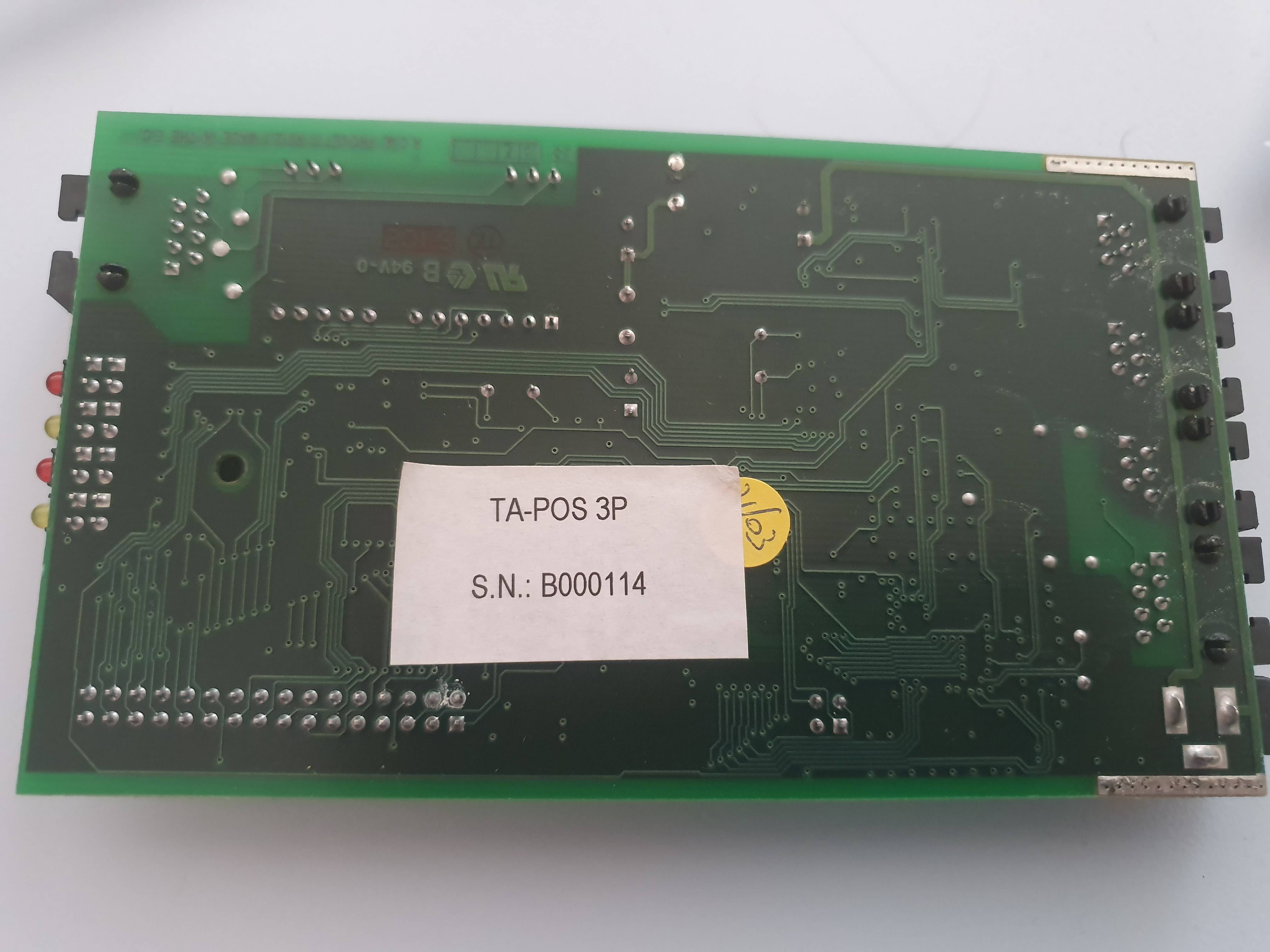TL;DR most likely it is either a 9V or 12V input, centre-positive
Following the power trace from the DC barrel jack:

We see it appears to be a centre-positive jack (the shell appears to head into the ground plane). The centre-pin runs on a trace which heads up to the centre of the board, where we find this little sub-circuit:

Reading the ident on that chip we get ?4063, which is undoubtedly an MC34063A DC-DC converter.
The following is a typical application circuit from the IC datasheet for the MC34063A in a step-down configuration.

Image Source
Tracing out the components on your board, while difficult to tell from the one angle, it appears to follow this circuit pretty well, with what appear to be the same component values, almost. The current limit resistor appears to be 0.15R (possibly 0.015R, its a weird code). The inductor appears to match too at 220uH. I can read 122 on the resistor from pin 5 to GND, so 1.2kR, and there is a second resistor which could read 3801 which would be 3.8kR which match the divider values for 5V output.
Based on that, the input must be higher than 5V in order for the MC34063 to function as a buck converter. Based on the example design in the datasheet, the inductor size would be functional for an input of 8V to 16V. So most likely it is either a 9V or 12V input.










